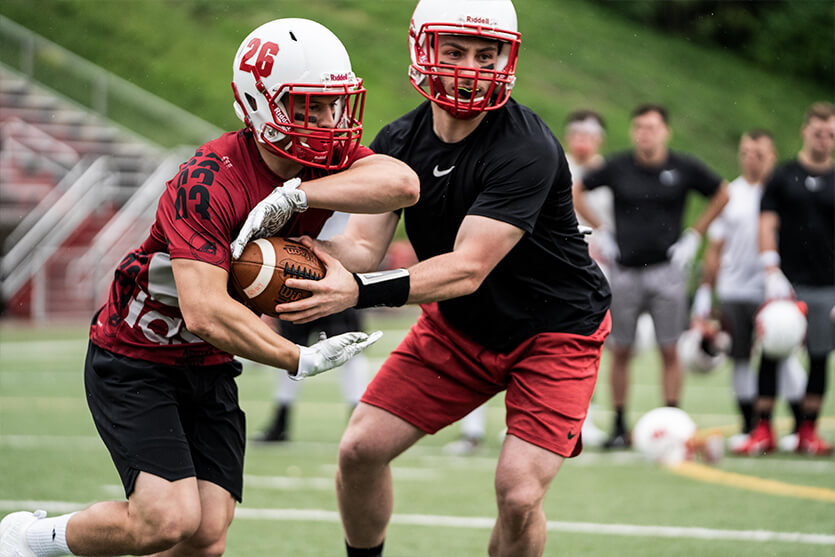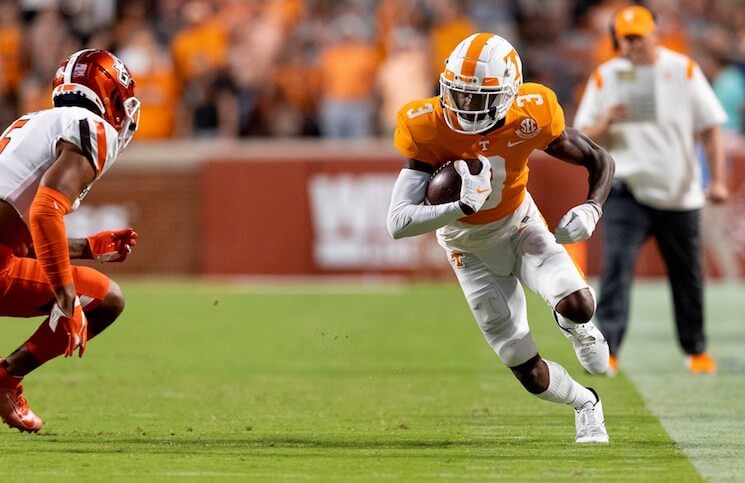How to Practice RPOs for Maximal Success

RPOs are good old-fashioned football when run properly.
Read ’em if you can’t block ’em.
And the good thing about RPOs is that they can truly be added on to any of your run plays.
Even mid-season.
But the key to that is practicing the RPO correctly.
You cannot just tell your quarterback in team to read a certain defender and throw the slant behind him.
So, let me share with you how Coach Steinberg practices RPOs in his Spread and Shred Offense so that you can start adding them into your own offense if you haven’t already.
Part One
Throughout practice, the position groups will work on the play in parts.
The offensive line will practice the run game components. They do not need to worry about the quarterback throwing the ball and many people wonder if we get a lot of penalties for illegal men downfield, but that has never happened to us. The key to that is for the quarterback to be decisive.
The quarterback will make mistakes as to whether he should throw the ball or hand it off, but the last thing you want to do is freak out on him and then he will become gun shy and afraid to make a decision. The quarterback must learn to be decisive. Also, if the quarterback decides to throw the ball, then he must either throw it immediately to the receiver or away so that the offensive line is not too far downfield. So, unless the quarterback is not decisive with his read or holds on to the ball instead of throwing it, the offensive line will not get penalized.
The wide receivers will practice the screens, routes, and stalk blocking with quarterbacks. The wide receivers do not need to know what is going on in the run game component of the RPO.
The running backs will practice the mesh point with the quarterbacks against a read player. The quarterback will read a service player and decide to hand the ball off or throw it to another service player acting as a wide receiver. If the quarterback hands the ball off, he will still fake a throw.
Part Two
Then, the offense will run RPOs as part of the script in seven on seven. Even though the quarterback will throw the ball, it helps keep the defense honest and gives them work with their run fits. Seven on seven is a great time for the quarterback to go through his read and hand the ball off.
Next, there will be a designated practice time to practice RPOs against a scout defense. But remember, the quarterbacks are the only players who need to understand the whole play. The offensive line needs to understand the run blocking. The running back needs to understand the run play. The wide receivers need to understand the pass play. The quarterback will put everything together.
The way we practice RPOs demonstrates how it brings things we are already doing together. And when the quarterback understands the RPO concepts well, then he will be able to use it as a tool in the run game with parameters set by the coaches.
This drill works the RPO process for the quarterback the best.
The quarterbacks and running backs are able to work their meshes as well as the quarterbacks are able to work their reads.
Only one defender is necessary and he will either squeeze toward the run or drop toward the pass. As the quarterback meshes with the running back, his eyes will be on the defender. If the defender squeezed toward the run, the quarterback will stay on his track and throw whatever route that is being run. If the defender stays outside and drops to take away the pass, then the quarterback will finish handing the ball off and give a fake throw to the receiver.
You can also always add more offensive lineman and receiver in a half-line drill to get more players involved.
RPOs are a simple way to get your players in the best position to succeed.
They take time to practice because your quarterback needs to get comfortable with the read, but they pay huge dividends once you get them rolling.
Coach Steinberg goes over all of this and more in this course.





Responses